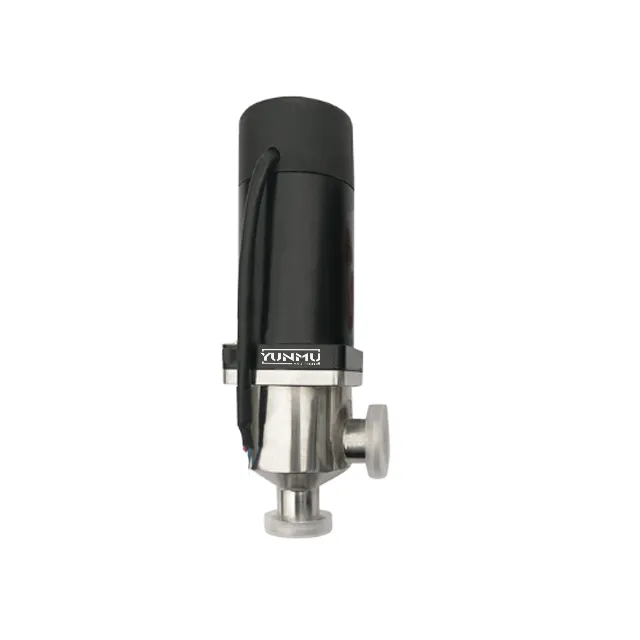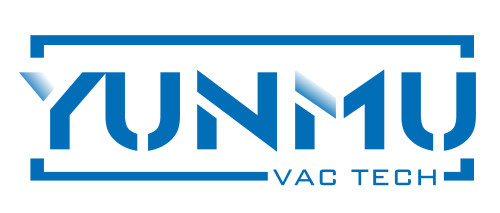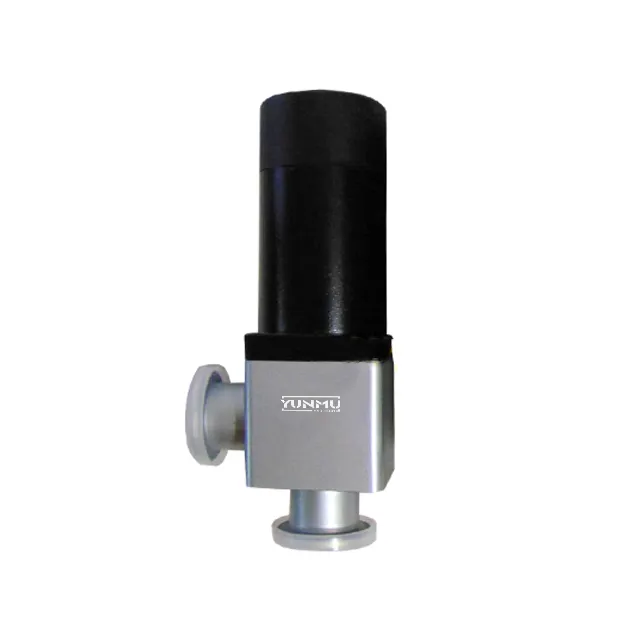The Critical Role of Vacuum Valves in Industrial Safety
In many industrial environments, maintaining safe and efficient operations is a top priority. One often overlooked component that significantly contributes to operational safety is the vacuum valve. These valves play a crucial role in controlling vacuum pressure within systems, preventing accidents, and ensuring smooth processes. Understanding how a vacuum valve can enhance safety helps businesses optimize their workflows while reducing risks.
Vacuum valves are essential in regulating pressure and maintaining proper vacuum levels. They act as control points that manage the flow of gases or liquids, enabling equipment to function within safe operational parameters. This article will explore the various ways vacuum valves contribute to safety in industrial operations, focusing on their design, application, and benefits.
Understanding Vacuum Valve Functionality
The Mechanics of Vacuum Valves
A vacuum valve operates by controlling the movement of air or gas into and out of a vacuum system. These valves help maintain a set vacuum level by opening or closing according to pressure changes. Their design can vary based on application, but the underlying principle is to ensure that the vacuum system operates safely without sudden pressure spikes or drops.
By effectively managing pressure, vacuum valves prevent potential hazards such as equipment damage or process interruptions. Their role in regulating airflow is fundamental to maintaining system integrity. For example, when a vacuum valve opens in response to excessive vacuum pressure, it allows air to enter and balance the pressure, preventing system collapse or damage.
Types of Vacuum Valves and Their Safety Implications
Different types of vacuum valves are designed for specific purposes, such as isolation valves, relief valves, and check valves. Each type plays a unique role in enhancing safety. Isolation valves can shut off vacuum flow to certain parts of a system during maintenance, reducing exposure to hazardous conditions.
Relief valves are crucial for preventing overpressure scenarios by releasing excess vacuum safely. Check valves prevent backflow, which can cause contamination or damage. Choosing the right vacuum valve type for a specific application is a vital safety decision.
Moreover, some vacuum valves incorporate advanced features like fail-safe mechanisms or remote control capabilities. These designs add layers of security by ensuring that valves operate correctly even during system faults or emergencies.
Enhancing Operational Safety with Vacuum Valves
Preventing Equipment Failure
Vacuum valves contribute directly to protecting equipment by maintaining optimal pressure levels. When vacuum pressure exceeds design limits, the risk of equipment failure rises dramatically. Properly functioning vacuum valves ensure that pressure remains within safe ranges, reducing wear and tear on machinery.
By preventing sudden vacuum loss or pressure surges, vacuum valves also avoid costly downtime caused by damaged components. This proactive safety measure improves operational continuity and reduces emergency repair situations.
The consequences of neglecting vacuum valve maintenance can be severe. Without these valves functioning correctly, vacuum pumps might be subjected to excessive strain, leading to overheating or mechanical breakdown. This highlights the importance of vacuum valves as protective devices in critical systems.
Minimizing Hazardous Situations
Many industrial processes involve the handling of volatile substances or environments where vacuum leaks can pose significant dangers. Vacuum valves help contain these risks by providing reliable sealing and controlled pressure release.
In situations where vacuum systems interface with flammable or toxic materials, vacuum valves act as a barrier against uncontrolled release. This containment protects workers and the environment from exposure to harmful substances, making vacuum valves a critical safety feature.
Additionally, vacuum valves can be used to isolate hazardous sections of a system quickly. In emergencies, operators can close vacuum valves to stop the flow of dangerous gases or liquids, limiting the scope of an incident and facilitating safer cleanup and repair.

Integration of Vacuum Valves in Safety Systems
Automated Safety Controls
Modern vacuum valves often integrate with automated control systems to enhance safety further. Sensors and controllers monitor vacuum levels in real-time, triggering valve adjustments when necessary. This automation reduces human error and ensures rapid response to unsafe pressure changes.
Automated vacuum valve systems can also log data for safety audits and predictive maintenance, supporting ongoing safety improvements. Such integration exemplifies how vacuum valves fit into a broader safety strategy.
Automation also enables remote monitoring and operation of vacuum valves, which is particularly valuable in hazardous or hard-to-reach locations. This reduces personnel exposure to danger while maintaining control over the system's safety parameters.
Compliance with Industry Standards
Using vacuum valves that comply with industry safety standards is essential for legal and operational reasons. Many regulatory bodies require that vacuum systems include appropriate safety valves to prevent accidents.
Choosing vacuum valves certified to meet these standards ensures that the system not only performs well but also adheres to safety regulations. This compliance protects companies from liability and enhances their reputation for safe practices.
Moreover, compliance often includes following installation and maintenance guidelines, ensuring the vacuum valves perform reliably throughout their service life. This reduces the risk of unexpected failures that could jeopardize safety.
Practical Considerations for Vacuum Valve Implementation
Selecting the Right Vacuum Valve
Choosing the right vacuum valve depends on several factors, including system size, operating pressure, and the nature of the fluids involved. Careful evaluation helps identify valves that will maintain safety without compromising system efficiency.
Material selection is also critical. Valves must withstand the chemical and physical conditions of the process environment to maintain integrity over time. Consulting with valve experts or manufacturers can provide tailored solutions for specific safety needs.
Additionally, compatibility with existing system components and control infrastructure should be considered to ensure seamless integration. Selecting vacuum valves with modular designs or adjustable settings can further enhance operational flexibility and safety.
Maintenance and Inspection Practices
Regular maintenance and inspection of vacuum valves are necessary to sustain their safety function. Over time, valves can wear out or become clogged, reducing their effectiveness.
Implementing a maintenance schedule that includes testing valve response and checking for leaks ensures vacuum valves operate reliably. Proper documentation of maintenance activities further supports safety management and regulatory compliance.
Training personnel to recognize signs of valve malfunction and respond appropriately is also important. This ensures that vacuum valves remain a dependable safety component rather than becoming a hidden risk.
Frequently Asked Questions
What safety benefits does a vacuum valve provide in industrial operations?
Vacuum valves regulate pressure to prevent equipment damage, reduce the risk of leaks, and protect workers from hazardous substances, thereby enhancing overall operational safety.
How often should vacuum valves be inspected and maintained?
Inspection and maintenance frequency depend on the application but generally should be performed regularly as part of preventive maintenance programs, often quarterly or semi-annually.
Can vacuum valves be integrated into automated safety systems?
Yes, modern vacuum valves often feature compatibility with automated controls, enabling real-time pressure monitoring and automatic adjustments to maintain safe operating conditions.
What should be considered when selecting a vacuum valve for safety purposes?
Key considerations include system pressure requirements, fluid compatibility, valve type, and compliance with industry safety standards to ensure reliable and safe operation.

